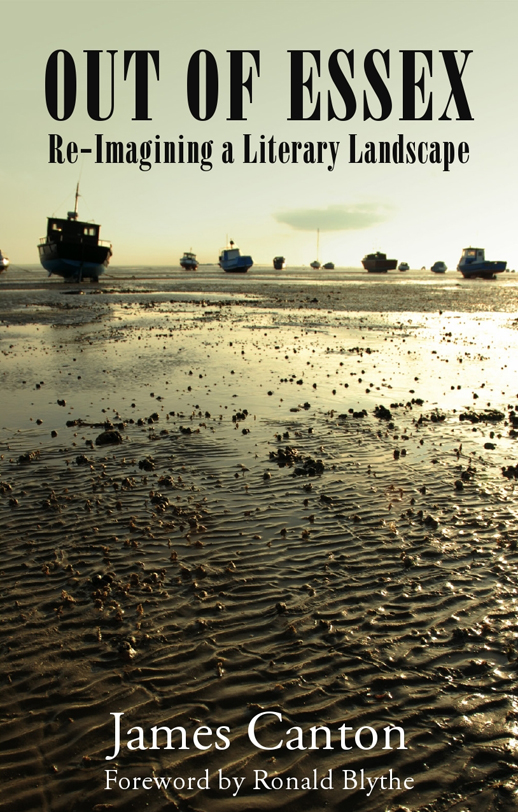James Canton, Out of Essex: Re-Imagining a Literary Landscape
A review by Ken Worpole.
Once famously described by High Tory James Wentworth Day as ‘the dustbin of London’, Essex is currently savouring revenge. The rediscovery of the hallucinatory naturalist writing of 1960s ornithologist, half-man, half-peregrine, J.A.Baker, has revised people’s opinions on the arcane beauty of the Essex countryside and extensive coastline, which takes in some of the most atmospheric estuaries and rivers to be found anywhere in the British Isles.
There’s a lot of good work going on at Essex University in countering ‘The Only Way is Essex’ version of the county’s life and culture, researching and promoting artists, writers, musicians and others who have fallen under the spell of the big skies, fractal marshland archipelagos, and ramshackle hideaways and byways of its bohemian and radical history. James Canton teaches a course on Wild Writing at the university, clearly influenced by Robert Macfarlane’s mapping of the terrain over the past decade, and his book on Essex writers, Out of Essex, is a good starting point for those wanting to know more about the Allinghams, Bakers, Conrads, Defoes, Ransomes, and many others who have captured the spirit of the county’s undervalued landscape in their work. After all, the 10th century poem ‘The Battle of Maldon’ is one of the foundation stones of English literature, and tiny Northey Island on the River Blackwater where it all happened remains virtually unchanged.
Canton’s book is not your usual ‘lit-crit’ text, heavy with jargon, but a series of essays in both senses of the word: a journey out into the world and an intellectual exploration of a singular subject or theme. He travels to Stanford-le-Hope to find the original Victorian cottage in which Conrad first imagined The Heart of Darkness, then tracks down the asylum in which poet John Clare was lodged in Epping Forest before he made his heroic escape walking back to Northborough, surviving by eating grass. Other chapters described explorations into the remaining ancient forests which are an almost unique to the Essex landscape to discover where H.G.Wells hid away his various mistresses, and to the delightful River Chelmer which J.A.Baker made his own as the true peregrine arcadia.
A weakness of the book is that it deals with established writers only, figures already in the literary canon. Yet more recent times have seen some vivid writers inspired by the wild marshes and badlands of the county, including Sylvia Townsend Warner, Denise Levertov, the quixotic troubadour-poet Martin Newell, post-punk novelist and poet, Lavinia Greenlaw, as well as some of the lyricists of the Southend music scene and the Canvey Delta. Nevertheless, Canton combines warmth, erudition and a lively personal narrative style, to bring together landscape, cultural history and literary detective work, enough to satisfy all those interested in how writers (and song-writers) derive inspiration from – and in turn shape – the reputation of distinctive local and regional landscapes.
Out of Essex: Re-Imagining a Literary Landscape is published by Signal Books. Buy a copy here.
(Also on an Essex tip, two previous Caught by the River contributors – Kieran Evans and Underworld’s Karl Hyde – have collaborated on a film, The Outer Edges, that charts a journey down an imagined line between Essex and London. We’ll have more on the film in the coming weeks in the meantime, here’s the trailer)
